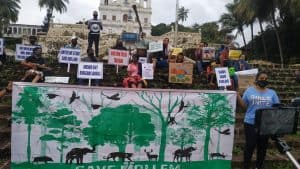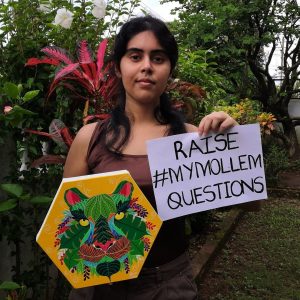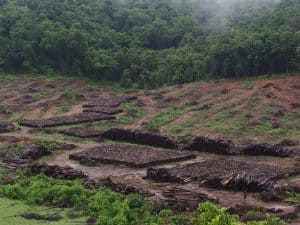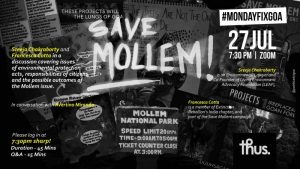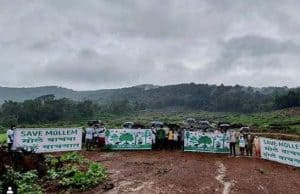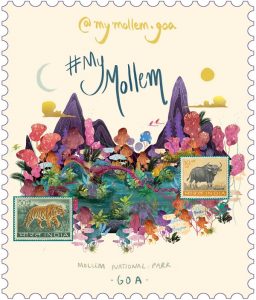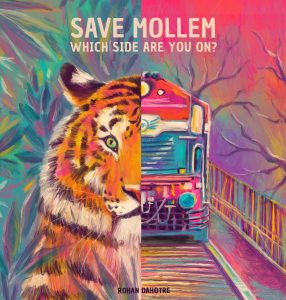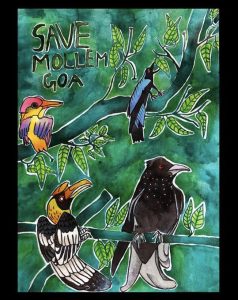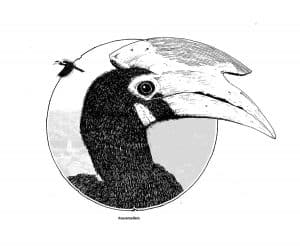People in Goa get together to help those with COVI
Posted on 04/05/2021Overview
A group of like-minded citizens have come together to remind their MLAs about the ill-effects of infrastructural projects in and around the protected Mollem National Park and Bhagvan Mahaveer Sanctuary. The citizens, ranging from retired professionals to young achievers, have launched the ‘Save Mollem’ movement as they decided to approach their respective MLAs with letters raising serious concerns regarding deforestation of Mollem in the name of infrastructural projects. Besides the letters, the group, comprising of ecologists, artists, lawyers, students and teachers among others, are taking to social media to create awareness among the general public.
Approach
These citizens first came to know about the three proposed projects slated for development through Mollem Sanctuary from the twitter handle of the Forest Minister who proudly announced that he cleared these projects over a virtual conference. This happened when the state was under lock-down.
The website Parivesh is supposed to have details of all these projects, many of these details were taken down after citizens started coming together. The Railway double-tracking project was cleared earlier and was known through the coal-related protests happening in Goa.
The first stage of the campaign was to build awareness about the issue and bring in the wonder of Mollem and a diversity of voices.
The second stage was time-bound as the Central Empowered Commitee of the Supreme Court was petitioned by Goa Foundation and there was a deadline wherein different
representations could be sent.
The third stage is effort based to sustain hope, awareness, and act.
Stage 1
1. 70,000+ signatures on a Change.org petition helped the movement go viral
2. 7,000+ emails sent via Let India Breathe
3. Webinars to spread awareness
4. Formal representations to National Board for Wildlife and Goa Government: 160+ scientists from across India and Goa/ 150+ small business owners in Goa/ 150+ tourism stakeholders/ Travel & Tourism Association of Goa (TTAG)
Stage 2 https://www.instagram.com/p/CDbO-2Xj42_/?utm_source=ig_web_copy_link
1. Goa Foundation petitions the High Court and the Central Empowered Committee (CEC) about the 3 projects in Mollem.
2. CEC asks Respondents to respond to them by 2nd Aug, 2020
3. Next High Court hearing is on 18th Aug, 2020
4. Citizens and expert representations sent to the CEC. Prerna Singh Bindra, former Member of the National Board for Wildlife sent a summary of 18 different representations sent to the CEC.
150 scientists/scientists who have worked closely with livelihoods around Mollem/ 400+ students (One Health)/ college students/ Travel Tourism Association of Goa/ 150+ tourism stakeholders/ lawyers from all across India/ Small business owners/ veterinarians/ Digambar Kamat, Leader of Opposition/ Project Affected citizens/ Artists/ Aam Aadmi Party, Goa/ Alina Saldanha, ex-Forest Minister and Member of Legislative Assembly, Bharatiya Janata Party/ Rohan Khaunte, Member of Legislative Assembly, Independent/ Aleixo Reginaldo Lourenco, Member of Legislative Assembly, Indian National Congress.
5. Extensive press coverage on letters and submissions to the CEC by the Indian Express, Hindustan Times, MidDay, the Citizen + almost daily coverage in local dailies like The Navhind Times, Herald, Lokmat, The Goan, Times of India (Goa edition)
6. Weekly webinars covering legal perspectives, ecology and Insta-hangouts.
7. Infographics + illustrations of letters and submissions by artists
8. Campaign support: 20,000+ signatures on the Jhatkaa petition to the CEC
9. Letters to the MLA + other public actions
The mobilization of the campaign to help protect Mollem began through a citizens led effort, where each of them used their skills sets and voices creatively through writing, art, law, music, teaching, science and their ability to come together in solidarity on the street and in virtual space for a vision of Goa.
They worked in small decentralised groups (under 10 people at any given point) with focused theme based groups. Based on their skill sets, they were responsible for handing over our roles to keep the work going. These groups generally communicated with their day to day communication.
Results
The effective coordination and management of the campaign with so many people involved in the campaign over the course of it has been successful due to the want of people to be involved and participate given how genuinely concerning these decisions are, so it is more about finding ways of using skills and creativity and planning incisively to keep to deadlines. But it is that good old work hard and be light yet decisive.
The campaign had a ton of content continuously coming out in support of the campaign, the management of which manifested these ideas was due to all contributors being motivated primarily by love (for Mollem, for Goa, for the concept of rights, for wildlife, etc) and were comfortable being themselves (they didn’t have to identify being an environmentalist or green its the person who has gone on that school trip or bathed in a waterfall that has an equal voice).
The campaign was also extremely successful with engaging with people from various sectors of society – residents, teachers, architects, students, lawyers, scientists, artists and a long list,
including voices from the major political parties including all three parties, including the presenting ruling party.
The leveraging of voices and talents of artists to help bring attention to this issue was made possible due to the presence of a volunteer art department with two coordinators who were efficient and kind people.
247 artists wrote a letter about how deeply embedded the natural scape is in their practice and several artists came together to volunteer their art being sent to the CEC – a pioneering effort and a
first by artists in the country.
Film was a wonderful medium that was used a lot to bring attention to Mollem. Kabir Naik has been a constant throughout with his series on story-telling for our biodiversity with Omkar Dharwadkar. Theirs was that viral video about the train track accidents. Youngsters like Nehara Pandey have also contributed. There have been music videos with local artists like Panchvem Mollem, apart from local rappers, and of course the kids Jake, Varun and their friends.
There were multiple petitions that came out to protect Mollem. The reason for this is because they were written to different decision making bodies of the government, and to let it be known to the youth that signing petitions is one of the many things that are required, but not the only, they have to give time and effort to write, given time, be engaged and get on the street.
The following are the number of signatures came in support of all these various petitions:
1. 70,000+ signatures on a Change.org petition helped the movement go viral
2. 7,000+ emails sent via Let India Breathe to National Board of Wildlife
3. 20,000+ signatures on the Jhatkaa petition to the CEC
Conclusion
What set this campaign apart from others we have seen in Goa before, is that Goans have involved citizenry and have retained the state for what it still is, change has happened for the worst where we have lost this ability. The vision (and fight) for the Goa we want and love cannot be consigned to the courts or professionalised through civil society, it is about all of us. Goa
has a long history of people rights movements, this is a way of resisting the non-participatory and destructive methods of these project in a contemporary and creative way. The diversity of people,
experiences and skill sets shows that these forests are important and have different value. Its credit to the citizens for using their voices, talents and getting on the street and not making it someone else’s business.
The reason for the campaign being so energized throughout the three months the campaign has been running, was due to the building resilience, and taking responsibility for a place or issue one loves, is important, with diversity, inclusiveness, being organic yet structured being the strengths of this campaign. We all love places, but holding the government and ourselves to protect them is the next step. The energy of citizens, the diversity of voices, the skills that each of us have and making sure that we keep finding ways to plan very well and take this forward is the key. Another common value that is shared is that hope comes from our belief that we are doing the right thing, and we are doing it together.
The campaign could however do with help from more lawyers who can engage with society, explain to people how to track a court case, how to file a RTI and constantly engage with society, and also having people on board writing periodically about general aspects of forests and mental health.
On the need for volunteers front, the Save Mollem campaign drivers would have like to have more people on board working in many different focused groups, more children, residents, tourism folks and teachers on board, and perhaps have a small kitty where art could be printed physically. There is a constant need for people to give their time and effort.
——
To all the young people out there, who care deeply about a cause and want to mobilise campaign support – Be inclusive, work despite having differences (within limits) and the work of standing up and using our voice is normal and not a heroes or martyr’s job or environmentalists. Keep an eye on the human good,
It’s been said before, but an ideal campaigner is when one doesn’t feel the need to applaud such actions but finds it weird when people don’t take action.
My Mollem Artwork
View more artwork here
——
Instagram accounts dedicated to My Mollem Campaign
- https://www.instagram.com/mymollem.goa/?hl=en
- https://www.instagram.com/mollem.memory.project/?hl=en
